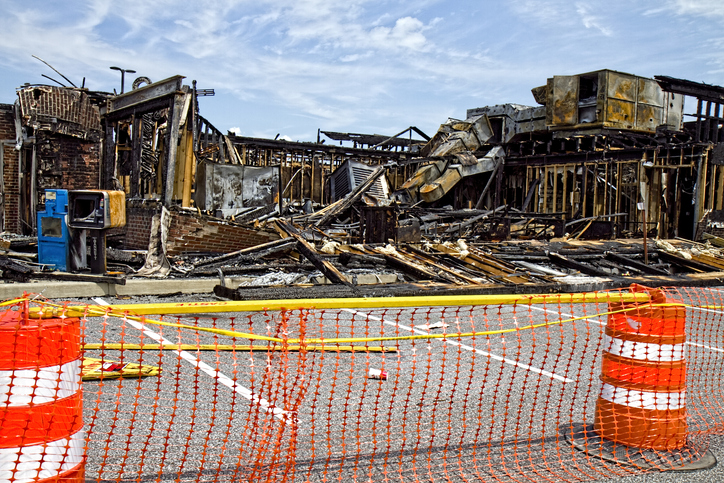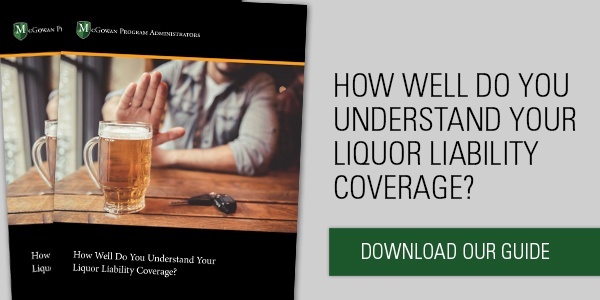While any structure or business is susceptible to fire, restaurant owners have more to worry about than most. Restaurant fires are destructive, costly, and many establishments don’t survive a fire loss.
During a four-year study by the National Fire Protection Association (NFPA), there were 7,640 structural fires in dining and drinking establishments. These fires caused more than $246 million in property damage.
According to the Federal Emergency Management Agency (FEMA), the average loss for a commercial kitchen fire is $23,000. Of those, FEMA reports 43% were a total loss, forcing the restaurant to close.
The best strategy to protect your restaurant from a fire loss includes prevention, training, and risk management coverage. Continue reading to learn about hidden restaurant fire hazards, how to manage them, as well as fire prevention training tips for your employees.
Be on the lookout for fire risk
The best defense against fire loss is to minimize the risk. While fires can start in innumerable ways, there are some areas of particular concern for restaurants.
Ductwork: Restaurant ductwork, including heating, cooling, and ventilation systems, are quick to spread fire. Should a fire start during a cooking service, it can quickly spread into ductwork that is designed to remove flammable air, vapors, and smoke from the kitchen. Ductwork traps and accumulates grease, which is highly flammable.
Remember, water should never be used on a grease fire. Water can cause grease to splatter and lead to an even larger fire. Regularly inspect your ductwork and consider having it serviced if it’s accumulating too much grease.
Vents and fans: Cooking area hood vents are located just above the stove. These vents intake flammable vapors and feed them into the exhaust system. Clean hood vents nightly.
Exhaust systems: Inspect the entire exhaust system regularly for grease buildup. The NFPA calls for quarterly inspections in high-volume commercial kitchens and semiannual inspections in medium-volume kitchens. If your kitchen includes solid fuel cooking equipment such as a wood-burning oven, you should perform monthly inspections.
Spontaneous combustion: Spontaneous combustion fires occur when a material generates enough heat to catch itself on fire. Examples include grease or chemical-filled rags near a heat source.
Smoking: Restaurants are susceptible to fires resulting from smoking materials. Such fires often originate in trash cans where a lit cigarette was disposed. If your staff is allowed to smoke, ensure they have a designated smoking area fit with ashtrays or disposal bins that are regularly checked and cleaned out.
Electrical fires: Don’t assume restaurant fires are solely sparked in the kitchen. Electrical fires can happen anywhere in the restaurant. Be on the lookout for frayed or damaged electrical cords or damaged outlets. Make sure your employees are aware of the difference between an electrical and combustible fire, and ensure you have the appropriate fire extinguishers to put out each one (using the wrong extinguisher on an electrical fire can cause even more damage).
Other areas of special concern
Grease traps keep used cooking oils and fats from entering the plumbing system. They are great at protecting your plumbing, but they present a fire risk if they aren’t cleaned properly.
The NFPA mandates the cleaning of grease traps. High-volume restaurants must clean them quarterly while smaller-volume establishments should perform the cleaning twice a year.
Another area of concern for restaurants is proper storage. Restaurant kitchens tend to be short on space. Don’t make the mistake of storing items too close to the cooking equipment. Whether it is cleaning supplies, paper towels, aprons or uniforms, proper storage away from any heat source is essential.
Prevention and minimizing fire risk
Fire prevention strategies are an integral part of minimizing your restaurant’s fire risk. Procedures can be simply and easily integrated. Extensive fire suppression systems are also a worthwhile investment.
Good housekeeping: One of the most accessible strategies for fire prevention involves good housekeeping. Keep these tips in mind:
- Flammable items should be safely stored.
- Paper products or other materials should be stored neatly and away from cooking areas.
- Trash should be disposed of daily including cardboard boxes, soiled rags, and other garbage.
- Walls, counters, fryers, broilers, grills, and ovens must be kept clean and free from grease buildup.
Automictic fire suppression: An automatic fire suppression system in the kitchen is one of the best preventative measures available. According to NFPA, more than half of restaurant fires involve cooking equipment.
Fire suppression systems automatically release fire retardant materials when triggered. They also include a manual switch to activate the suppression. Once activated, the system automatically shuts off the fuel or energy supply to the cooking system.
Back up extinguishers: Install back up extinguishers in your restaurant. Extinguishers in the cooking area should be Class K for use on high-temperature grease fires. Use them only after the built-in suppression system is activated.
Install Class ABC extinguishers in other areas of the restaurant. Use these to deal with fires resulting from other materials such as electrical issues, paper, plastic, or wood.
Note fire extinguishers are helpful only when staff is trained on their proper use. Staff should know where the extinguishers are located and exactly how to operate one.
You may use the acronym PAST:
- Pull the pin out
- Aim at the base of the fire
- Sweep the extinguisher back and forth
- Ten feet away – meaning stand 10 feet back from the fire
Staff training for a fire emergency
Once your staff knows how to recognize and avoid fire risks, they must also know what to do in case of an emergency. At a minimum, appoint and train for two roles:
- Train one employee per shift to cut off the gas and electrical source in case of an emergency.
- Train another employee per shift as an evacuation manager. They will determine when evacuation is necessary and lead the orderly evacuation of the restaurant.
Avoid hidden fire hazards and protect your restaurant
Despite the most extensive training and prevention measures, restaurant fires occur. A fire can cause extensive damage, revenue loss, and even permanent closure. Make sure your restaurant is protected with McGowan’s Restaurant Package Insurance.



